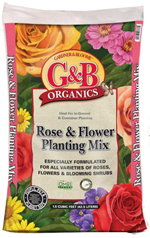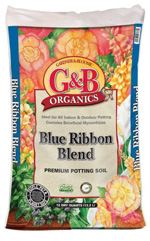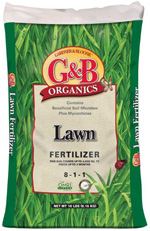|

|
 |
Featured Quote: "Nature does have manure and she does have roots as well as blossoms, and you can't hate the manure and blame the roots for not being blossoms." ~ Buckminster Fuller |
|
Arriving Soon, Murraya koenigii or the Curry leaf. This small tropical/sub-tropical tree is native to Sri Lanka and India. The fresh leaves are used in cooking and are an important flavoring in Indian/Asian cuisine. We will have a very limited quantity arriving in the 2 gallon pots. This will be our only shipment of this plant. |

|

|
Shade is inevitable in gardens. It is a blessing and a burden; while few plants flourish in the shade, the ones which do flourish are very pretty. As a garden matures, trees get larger than was planned, shrubs soar and become treelike themselves, and soon there is very little sun to garden in. Many of these problems can be avoided, if trees are planted so their shadows fall on paved areas or the roof of the house. Trees and shrubs can be pruned to let more light through, and some that were planted too close together should be removed, but full-grown trees and shrubs cannot be replaced quickly, so what you can do with the existing shade should be carefully thought out. There are varying degrees of shade. Deep shade is the most difficult problem. Only a handful of plants will grow in dark shade, and even they would prefer more light. Deep shade is usually caused by dense trees that keep branches close to the ground. Again, thinning is one way of allowing more light, but sometimes it helps to simply cut off the lower branches so more light slips through. Deep shade is also a logical place for a patio or other paved area, which sidesteps the problem of what to plant. Light shade is much easier to deal with. "Light" means that some sunlight filters through whatever is directly above, or that if nothing is directly overhead but a plant grows in the shadow of something (as on the north side of a house), there is indirect light coming from the open sky above. Many more plants will grow in this kind of shade, and a few, famous for their flowers, actually require it. For summer planting, here are some great bedding plants for shade gardens. Like most shade plants, these need light but not direct sun (don't count on them in very dark entries, for instance.) All are bread-and-butter nursery items or at least easy to grow from seed. Not all are annuals, but they're treated that way and replanted each year.
Bedding begonia:
Coleus:
Impatiens:
Monkey flower:
Wishbone flower: |

|
An arrangement of fresh flowers will brighten a room, bringing the beauty of nature indoors. Picking fresh flowers that you have grown yourself is one of the delights of gardening, but whether you are picking your own flowers or buying cut flowers, you will want to do all you can to get the most from your arrangement. Picking Flowers When picking flowers from your garden, do so early in the morning or late in the afternoon. Cool them quickly by placing them in a bucket of water left in a cool place for an hour or so. This is especially important in hot summer weather. Buying Cut Flowers If you are buying cut flowers, look for bright, fresh-looking flowers that are just starting to open. Avoid flowers that have been standing in the sun or have been exposed to car exhaust fumes. Flowers with yellowing leaves on the stem or those with slimy stems have been in water for quite some time and are unlikely to be very satisfactory. When you get your flowers home, put them straight into a bucket of water without unwrapping them and leave them in a cool place to revive. Clean Vases Make sure your vases are perfectly clean. The stains in vases are usually bacteria that will get to work blocking the water uptake to the flower stems. Stains that are difficult to remove with normal cleaning may be removed by filling the vase with water and adding a few drops of household bleach. Allow the vase to soak for a couple of hours; then rinse well. Clean Water and Preservatives Clean water is essential for cut flowers. You can change the water in the vase daily or use a floral preservative. Check the vase often to see if it needs filling. Some flowers with woody stems drink a lot of water, especially in the first two or three days after cutting.
Daffodils, jonquils and tulips should not be placed with other flowers immediately after cutting because their secretions can block the stems of other flowers, causing their vase-mates to collapse. Place them in a separate vase for an hour or two. Then seal the tips of the stems by dipping them in very hot water before adding them to a mixed arrangement. If flowers develop a bent neck, they probably have an air lock in the stem and are unable to absorb water properly. Recut the stems under water and place them in cool water for a couple of hours. Most flowers absorb water best if cuts are made between nodes or joints. This is certainly true of carnations and hydrangeas. Never crush the stems, as the damaged tissue will not absorb water well, and the water will become polluted. Sharp, clean cuts are best. When creating an arrangement from your garden, remember that foliage goes nicely with flowers--try some ferns or other greenery in your arrangement. |
 |
|
If you hate mosquitoes, you are not alone! In fact, window screens, introduced in the 1880's, were called "the most humane contribution the 19th century made to the preservation of sanity and good temper." The pesky little insect has ruined countless hikes, BBQ's and campouts. This vector has literally killed millions of people throughout history, and still affects millions around the world today. As daunting as this sounds, there are steps you can take to co-exist and stay healthy. What attracts the mosquito? After 30 million years of evolution, the mosquito has perfected its hunting skills. The mosquito uses three sensors to attract its prey:
The best thing you can do to control mosquitoes is to use a mosquito repellant and eliminate standing water around your home. A mosquito can lay up to 250 eggs at one time in still water, and they can hatch as fast as 7 days. Check your gutters frequently for collected water (especially if they sag and aren't level), along with birdbaths, buckets or boggy areas of the garden. Burning citronella candles, using an electronic bug zapper, or spraying surfaces near entertainment areas with a mosquito barrier spray will also help kill, or at least repel, mosquitoes. We also highly recommend using Mosquito Dunks if you have areas of standing water that you can't drain. Diligence is your best protection. Stay indoors at dawn and dusk hours, wear pants and long-sleeved shirts if possible, avoid any standing water, and repair broken screens. Although it can be a constant battle, by incorporating the use of insect repellents and breeding prevention (eliminating standing water), mosquitoes and the diseases they carry can be reduced, making the outdoors more accessible and enjoyable for everyone. |
 |
5 More Mistakes Made by the New Gardener
1. Planting too deep: If, for some reason, you can't plant at the same level as the soil in the container, it is all right (and in some soils, like heavy clay, preferable) to plant it a little high. There are a couple of plants (tomatoes and marigolds come to mind) that you CAN plant deep; these two examples will actually develop roots along the buried part of the stem. By the same token, there are a couple of plants that require being planted a little high (I'm thinking camellias and azaleas). But if you're a new gardener, just keep it simple at first and plant most everything at the same level it was in the container - you won't go wrong.
2. Removing plants that are dormant because they look dead: There are also evergreen perennials and those that die to the ground in the winter (AKA “herbaceous”). These herbaceous types will re-grow in the spring from the same root. Although there are many, one example of an herbaceous perennial is Gloriosa Daisy. Don't be in a hurry to dig up and discard a perennial that dies to the ground. As with the trees and shrubs, some send up new growth earlier than others; this can also depend on how cold or warm the preceding winter was and how early spring breaks, both of which can vary from year to year.
3. Applying too much fertilizer or fertilizing when the plant is stressed for water: Another no-no is fertilizing your plant when it is dry. When fertilizer is applied to a plant, water is given immediately thereafter so the plant can draw up food. When an extremely dry plant is fertilized, it draws up the water (and the fertilizer) much more rapidly than it normally would; this results in a burn. Make sure your plant is moist and not stressed for water before you fertilize it.
4. Using a weed-eater around the trunks of trees: Problem is, some trees (especially those with thinner bark) can be killed by this practice. Directly under the bark of the tree is the cambium layer; if this is damaged, everything above it will die. If the whole circumference of the trunk is damaged, the whole tree will die. While some trees have thick enough bark to withstand the ravages of the weed-eater, why take the chance?
5. Pruning (some) spring-flowering shrubs at the wrong time of the year: The most common time to prune things is in the winter or early spring, depending on where you live. If your shrub blooms on new wood, this won't be a problem. But some flowering shrubs (like lilacs) bloom on old wood. What this means is that they start forming their flower buds in the summer of the year before they bloom (even though you can't see them yet). You can see where winter or spring pruning on a shrub like this would create a problem. The problem is, you won't have any flowers the following spring. The time of year to prune this type of shrub is immediately after it's finished blooming. If you are in doubt about when to prune your flowering shrub, just stop by and ask us! |
 |
|
What You'll Need: Salad:
Directions:
|
 click here for a printer friendly version of this page
click here for a printer friendly version of this page |
Written content © 2004-2014 Garden Partners LLC, or respective authors. All Rights Reserved. Privacy Policy. All written content contained in this site is protected by United States copyright law and may not be reproduced, distributed, transmitted, displayed, published, or broadcast without prior written permission of Garden Partners, LLC. You may not alter or remove any trademark, copyright or other notice from copies of the content. Would you like a newsletter like this for your nursery or garden center? Please feel free to look at what we have to offer and contact us for your garden center marketing solutions. |












 Preparing the Flowers
Preparing the Flowers 